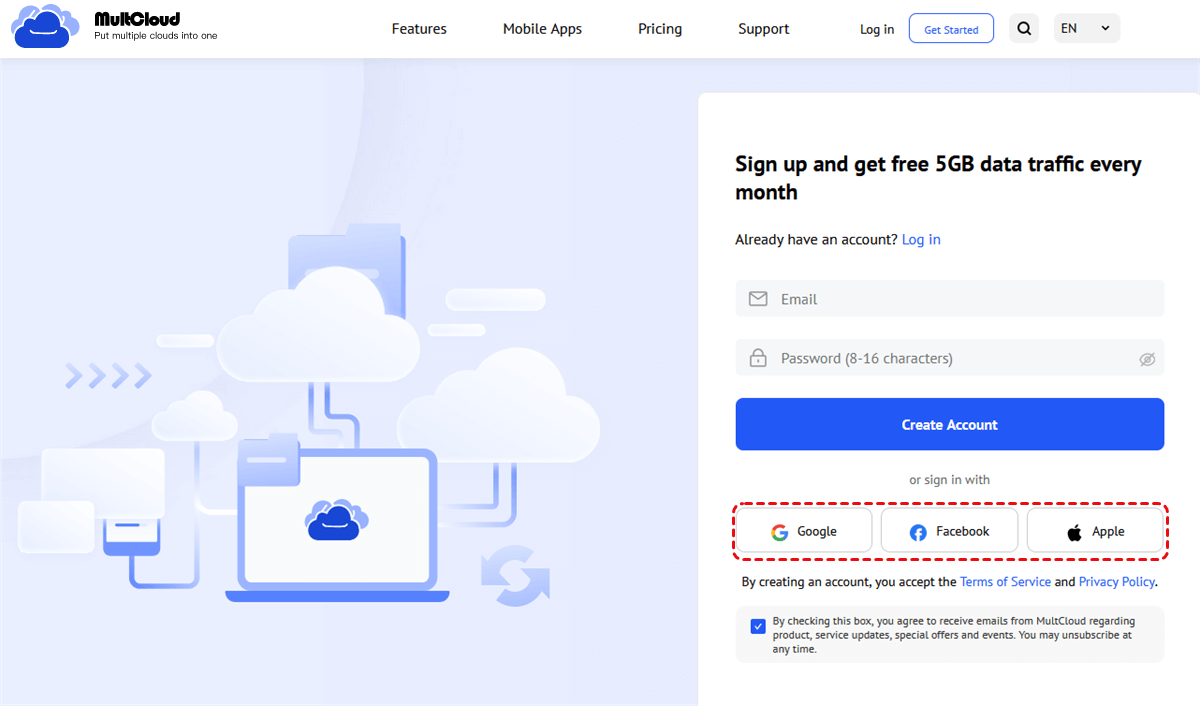After looking through the instruction below, you will learn about 3 ways to help you copy and transfer SharePoint data to OneDrive. And, you can transfer files from SharePoint to OneDrive by multiple functions which are supplied by MultCloud.

Quick Search:

Can I move or sync files from SharePoint Online to OneDrive? Every new file needs to be uploaded to OneDrive manually. Can anyone tell me how to do this quickly and efficiently?
- Question from a community
If you want to quickly move SharePoint files to OneDrive while keeping your data safe, we recommend you to try a professional multiple cloud storage manager, MultCloud. With this tool, you can directly transfer files or folders from one cloud to another without frequently switching between two cloud accounts, and without downloading and re-uploading.
.png)
Why is MultCloud an excellent and suitable SharePoint to OneDrive migration tool? Because it has the following features and advantages:
Now, follow the steps below to quickly and securely transfer data from SharePoint to OneDrive.
MultCloud is an online cloud storage manager, to use it, first, you must create an account.

After creating an account, log into their platform. In the main panel, click the "Add Cloud" tab at the top and select the cloud brand you want to include. Then, follow the simple guide to finish adding the clouds.
Note: You can only add one cloud account at a time. So, you should add other clouds by repeating the process.
Now, go to the "Cloud Transfer" tab and specify the source and destination as SharePoint Online and OneDrive or folders within them, respectively. Finally, click on "Transfer Now" and wait for the process to complete.
Notes:
If you just want to copy a single file and folder from SharePoint to OneDrive, you can use the basic functions provided by MultCloud for editing files on a cloud drive: Copy or Copy to. You just need to enter the folder path in the SharePoint site, select the file or folder to be moved, then select "Copy to" in the pop-up window, and finally select the folder path in OneDrive.
If you choose the "Copy" function, after the copy is successful, you need to manually go to the OneDrive path and right-click on the blank space to select "Paste" to copy.
As a professional cloud file manager, MultCloud also supports other useful features to meet different user needs, such as:
When you want to share files with different teams, or even give ownership to other teams, you can move (or copy) files between OneDrive for work or school and a Microsoft SharePoint site. You can move (or copy) files and folders from OneDrive to SharePoint, and from SharePoint to OneDrive, within or between SharePoint sites.
Sign in to your Office 365 account, then click the app icon and select SharePoint.
Find the file you want to move to OneDrive. To select a file, click/check the box to the left of the file title.
Click the show actions icon. Then select "Move to".
Click "My Files" in the pop-up window. Then select one of the paths, and finally click "Move here".
The most common way to migrate SharePoint files to OneDrive is to manually move the content to OneDrive. This method works when there is not much data to move. Here are the steps:
Go to the SharePoint application or web page and find the data you want to move. Select a file or folder and download it to your local storage device via the "Download" option.
Go to OneDrive and manually upload the downloaded data to a folder in OneDrive.
The main disadvantage of manual migration is that the metadata of the content is not copied to OneDrive. This means details such as the creation and modification dates cannot be changed.
Following any of the above methods, you can move files from SharePoint to OneDrive. You can save a lot of time if you choose the efficient way MultCloud offers. In addition to the "Cloud Transfer" feature,
As a web-based application, MultCloud requires no download and installation. You only need to enter MultCloud from the browser to register an account, and then log in to use the 5 powerful functions provided by MultCloud: Cloud Transfer, Team Transfer, Cloud Sync, Cloud Backup, Instagram Donweloader, Remote Upload, and Email Migration.